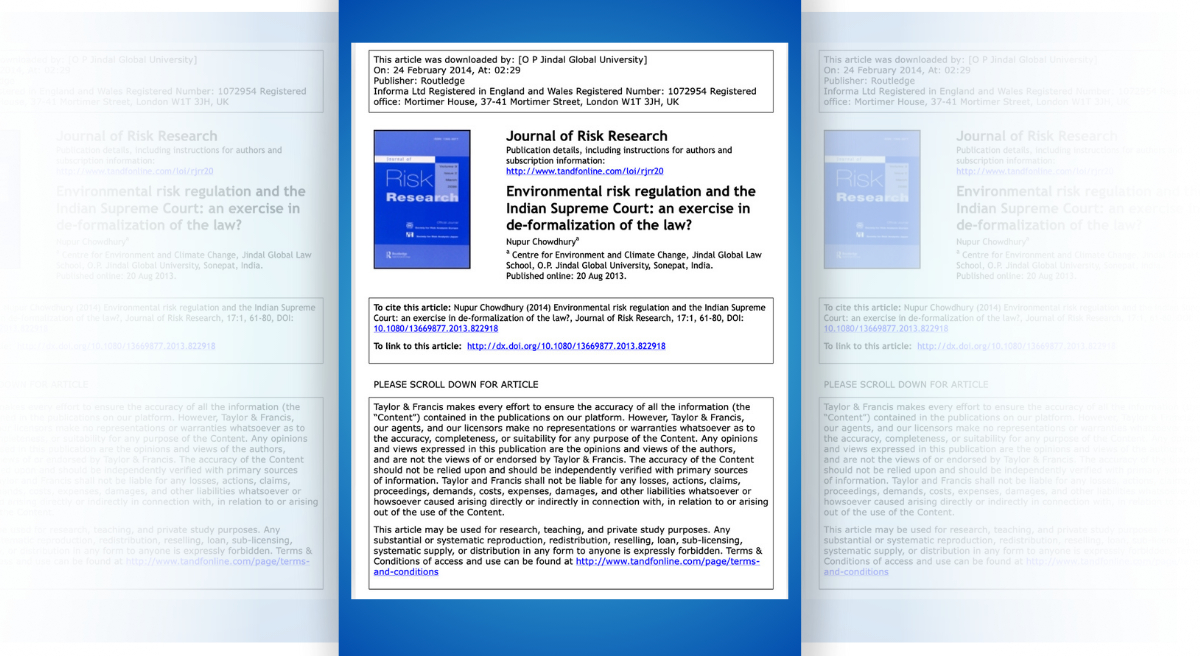Environmental Risk Regulation and the Indian Supreme Court: an Exercise in De-formalization of the Law?
The Supreme Court of India has become a prolific positive legislator through the interpretation of Constitutional values and principles. Environmental rights and obligations has been one area in which the Supreme Court has been actively engaging in building rights-based jurisprudence ensuring the protection of environment and health. However, environmental risks emanating from technological intervention has been an area in which the Supreme Court has only intervened reluctantly by relying on individual technical experts, who assume the role of amicus curiae. Reliance on technical experts reflects a move away from democratic legitimacy that Max Weber had underlined as intrinsic to the formal character of law. The Supreme Court’s reluctance to intervene on issues of technology regulation is not surprising given that technological development is subsumed within a strong political narrative of national development and by implication for determining policy which is the domain of the executive. Interestingly, the Court has demonstrated no such reluctance in other areas – such as in addressing environmental risks from forest degradation (Godavarman case). It has shown scant regard for executive turf. Are there then two parallel narratives that exist? A closer inspection reveals that both these are expressions of the same macro narrative, that of narrowing of forms of participation and legitimate spaces for the participation of the public in the policy discourse on environmental risk regulation. This narrative is explored through three ongoing cases in the Supreme Court (T.N. Godavarman Thirumulpad v. Union of India; Aruna Rodrigues & Ors. v. Union Of India & Ors. and G. Sundarrajan v. Union of India & Ors.).
This paper was also published on Taylor and Francis Online.
